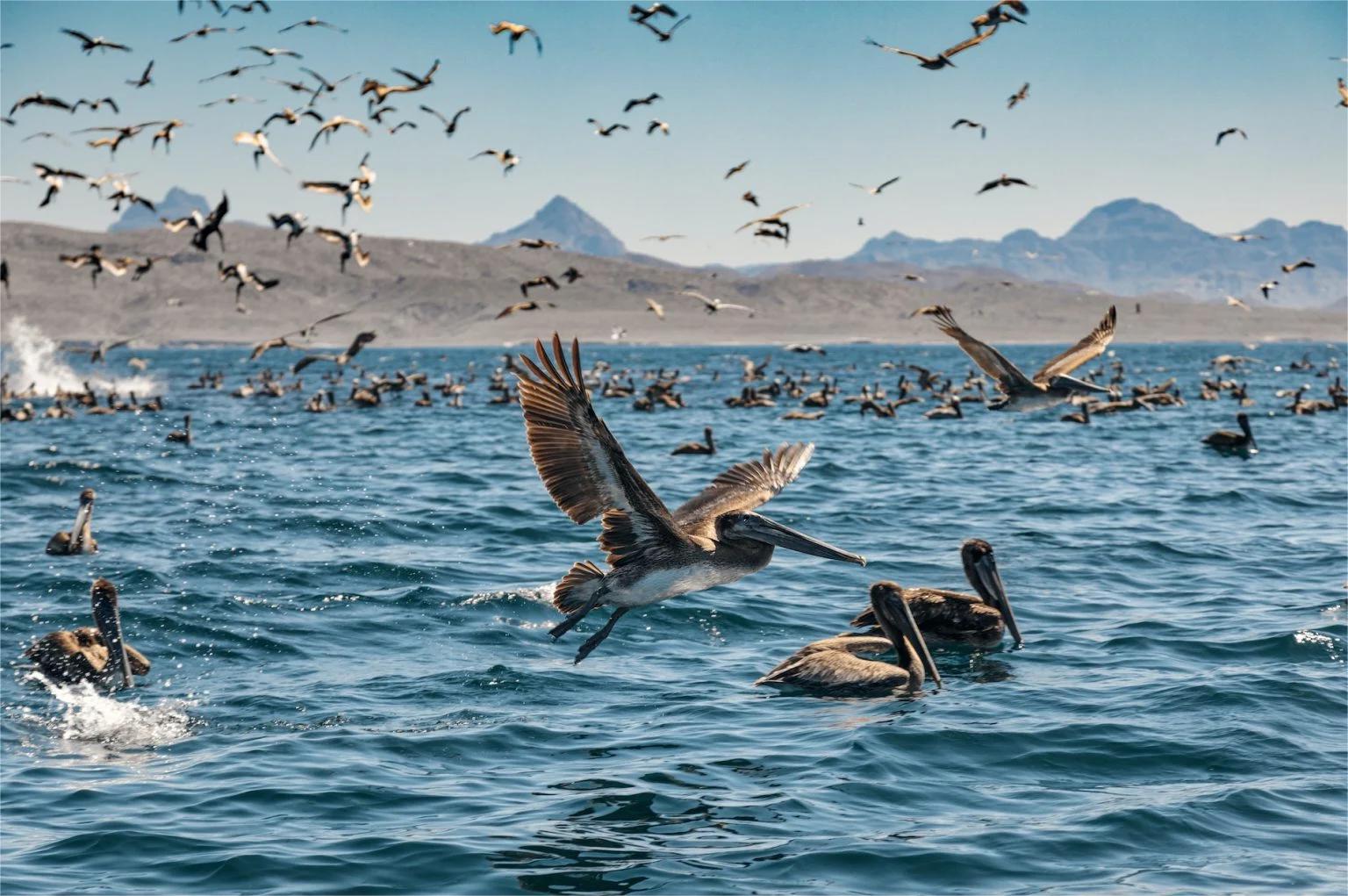The Secrets Of North Dakota’s Migrating Pelican Colonies

Have you ever wondered why North Dakota is a hotspot for migrating pelican colonies? Every year, thousands of these majestic birds make their way to this seemingly unlikely destination. North Dakota offers a perfect mix of lakes, wetlands, and open spaces, creating an ideal habitat for pelicans. The Chase Lake National Wildlife Refuge, in particular, hosts one of the largest American white pelican colonies in North America. These birds travel from as far as the Gulf of Mexico, drawn by the abundant food and safe nesting areas. Whether you're a bird enthusiast or just curious, North Dakota's pelican migration is a sight to behold.
The Magic of North Dakota's Migrating Pelican Colonies
North Dakota may not be the first place that comes to mind when thinking about pelicans, but this state holds some of the most fascinating spots for observing these majestic birds. Each year, thousands of pelicans migrate to North Dakota, creating a spectacle that draws bird watchers and nature enthusiasts alike. Here are some of the best places to witness this natural wonder.
Chase Lake National Wildlife Refuge
Chase Lake National Wildlife Refuge is a haven for pelicans. Established in 1908, it is one of the oldest wildlife refuges in the United States. The refuge provides a perfect habitat for pelicans, with its vast wetlands and abundant fish supply.
- Chase Lake: The centerpiece of the refuge, Chase Lake, hosts one of the largest American white pelican colonies in North America. During peak migration, you can see thousands of pelicans nesting and feeding.
Lake Sakakawea
Lake Sakakawea, one of the largest man-made reservoirs in the United States, offers another prime location for pelican watching. The lake's extensive shoreline and islands provide ideal nesting sites.
- Garrison Dam: Near the dam, pelicans can often be seen fishing in the turbulent waters. The dam area also offers excellent vantage points for photography.
Audubon National Wildlife Refuge
Audubon National Wildlife Refuge is another gem for bird watchers. The refuge's diverse habitats, including wetlands, grasslands, and woodlands, support a wide variety of bird species, including pelicans.
- Audubon Lake: This lake within the refuge is a popular spot for pelicans. The shallow waters make it easy for them to catch fish, and the surrounding area offers great opportunities for bird watching.
Long Lake National Wildlife Refuge
Long Lake National Wildlife Refuge is known for its rich bird life. The refuge's extensive wetlands attract a variety of waterfowl, including pelicans.
- Long Lake: Pelicans can be seen gliding gracefully over the lake or resting on its shores. The refuge also has several observation points where visitors can get a closer look at these magnificent birds.
Upper Souris National Wildlife Refuge
Upper Souris National Wildlife Refuge, located along the Souris River, is another excellent spot for observing pelicans. The refuge's mix of wetlands and grasslands provides a perfect habitat for these birds.
- Lake Darling: Named after the famous conservationist Jay N. "Ding" Darling, this lake within the refuge is a favorite spot for pelicans. The lake's calm waters and abundant fish make it an ideal feeding ground.
J. Clark Salyer National Wildlife Refuge
J. Clark Salyer National Wildlife Refuge, the largest refuge in North Dakota, offers a diverse landscape that attracts a wide range of bird species, including pelicans.
- Marshes and Wetlands: The refuge's extensive marshes and wetlands are perfect for pelican nesting and feeding. Visitors can explore the area through a network of trails and observation points.
Lake Metigoshe State Park
Lake Metigoshe State Park, located in the Turtle Mountains, is a beautiful spot for outdoor activities and bird watching. The park's lakes and wetlands attract a variety of waterfowl, including pelicans.
- Lake Metigoshe: Pelicans can often be seen fishing in the lake's clear waters. The park also offers several trails and picnic areas where visitors can relax and enjoy the scenery.
Devils Lake
Devils Lake, the largest natural body of water in North Dakota, is a popular destination for fishing, boating, and bird watching. The lake's vast expanse provides ample space for pelicans to thrive.
- Grahams Island State Park: Located on an island in Devils Lake, this state park offers excellent opportunities for pelican watching. The park's trails and observation points provide great views of the lake and its bird life.
Sheyenne National Grassland
Sheyenne National Grassland, with its rolling prairies and wetlands, is a unique spot for observing pelicans. The grassland's diverse habitats support a wide range of wildlife.
- Wetland Areas: The grassland's wetlands are a favorite spot for pelicans. Visitors can explore the area through a network of trails and enjoy the sight of pelicans gliding over the water.
Witness the Magic of North Dakota's Pelicans
North Dakota's migrating pelican colonies offer a unique spectacle. These majestic birds, with their impressive wingspans, create a breathtaking scene as they soar across the sky. Visiting the Chase Lake National Wildlife Refuge provides an up-close look at their nesting habits and migratory patterns. The best time to visit is during spring and summer when the pelicans are most active. Bring binoculars for a better view and a camera to capture the moment. This natural wonder is a must-see for bird enthusiasts and nature lovers alike. Experiencing the pelicans in their natural habitat is both educational and awe-inspiring. Make sure to respect their space and follow guidelines to ensure their protection. North Dakota's pelican colonies are a hidden gem, offering a glimpse into the beauty of wildlife migration. Don't miss out on this incredible experience.

